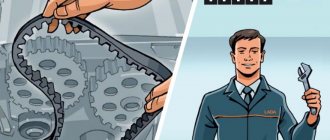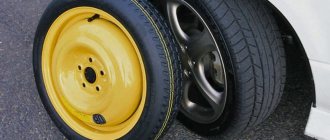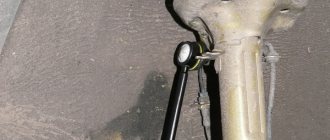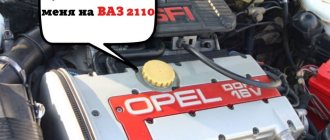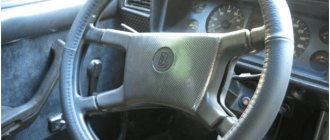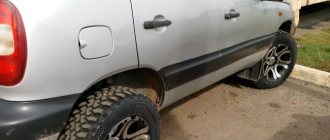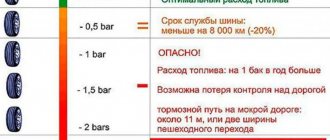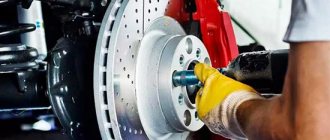Not everyone can afford a new car, but you can buy a used one, and the main thing here is not the numbers on the odometer.
“Don’t look at the mileage or the year of manufacture! Look at the condition!”: how to buy a used car and not regret the purchase
Everyone who buys a used car dreams of being lucky enough to find a copy in perfect condition with scanty mileage and for ridiculous money. Dreaming is not harmful, but looking at life realistically is even useful.
What mileage is considered normal for a car to buy?
The average car covers 10-30 thousand km in a year. So, if you are offered a three-year car with 30 thousand kilometers, this is a very good option, but provided that the car was owned by some average manager whose daily route: home-office-supermarket, and a couple of times a month going abroad city for barbecue. A neat girl or mother taking children to school clubs is also wonderful.
A completely different matter is a fisherman-hunter, whose car drove 5 thousand a year, but where it was carried - one can only guess. A work car, in which the owner spent the whole day flying around on business in the city and its environs, is also not the best offer, since good roads are usually found only on central streets.
In general, in addition to the mileage itself, you need to try to find out other details about a used car in order to compare the facts and not buy a goat in an iron bag. At least pay an adequate price.
Low mileage, but big age
A car, like a person, is subject to aging, and its technical condition depends on the inexorable passage of time. If the car has been in the garage for 10 years, then it is not at all a fact that it will fly on the roads like new.
Low mileage is usually associated with so-called wintering. After traveling to the dacha in the summer and driving about 3-5 thousand kilometers during the season, some owners drive their four-wheeled friend into the garage for six months until the snow melts.
“Usually, before being placed in long-term storage, cars undergo a set of conservation measures,” says technical expert Igor Morzharetto . Wooden supports are placed under the thresholds to remove weight from the springs and avoid the effect of “metal fatigue”. Next, the body and sides are rubbed with gun fat or other anti-corrosion agents to prevent the formation of rust. Fuel is poured into the tank under the cap to avoid moisture condensation on the internal walls and the appearance of putrefactive deposits. But even after these procedures, time takes its toll, and in the spring the car appears to its owners in a completely different form than before entering hibernation.
Question answer
A car owner's expenses for the year. Infographics
The process of re-opening is also not at all simple. First, all fluids are changed, including fuel, and then the rubber joints and joints are carefully inspected, where leaks and smudges may form. Be sure to drain the engine oil and filters so that wear particles settling in it do not damage the rubbing parts.
But most importantly, it is necessary to pump new brake fluid and check the performance of the system. During prolonged standing, the liquid absorbs moisture and loses its performance. If the car has been sitting idle for a couple of seasons, then the risk of unexpected boiling of the brake fluid increases.
Naturally, most drivers do not carry out such complex procedures, which is why downtime in garages results in aging equipment.
A horse with experience. 6 signs of a good used car Read more
How to choose a used car
When considering any option, you need to know:
- Make of the car, and in which country it was assembled.
- The roads along which she drove from the factory to the sale itself.
- In what mode was it used?
- What can you say about the driving style of its owner and his care for technology?
What mileage can be called “normal” - there is no such guideline. You can, of course, look at the odometer and compare it with the year of manufacture, but this is not always informative.
Misconception #4. Buy from a private seller only
There is still an opinion among buyers that it is better to buy a used car from private sellers, and that car dealerships and resellers should be avoided. Indeed, both of them have gained fame as not the most reliable sellers: “gray” car dealerships use cunning schemes and brazenly deceive buyers, and resellers sell hastily restored junk cars. But the automobile market in Russia is undergoing dramatic changes - the number of trade-in transactions with official dealers is growing, large companies selling used cars are emerging that offer proven cars, provide guarantees and provide favorable conditions. But many private sellers do not neglect the opportunity to hide the mileage or hide the technical condition of some components.
“We examined a 2007 Nissan X-Trail in Krasnodar, the seller is a private owner. For its age, the car is very good: in its original color, original title, a couple of flaws in the body. One of the minuses is the twisted mileage: 123 thousand on the odometer, obviously more based on the condition of the interior. After the test drive, we took it to a partner service, the diagnostics did not reveal anything criminal. Only the steering rack, the right front caliper (it went sour) and the front left boot were condemned. We decided to take it. A few days later, while the crossover was being prepared for sale, the check light came on and the engine refused to run smoothly. We took the X-Trail to the service station again, where they discovered that the variator was slipping and its sudden death. I had to put the car up for auction for professional buyers and sell it at a loss,” said Mikhail Ertsev, operating director of the Automama used car retail chain.
How to choose a car to your liking
For example, the car looks good outwardly, and the mileage is only 15 thousand, but in fact the driver was inexperienced and clumsy. Without having time to straighten out the car after one accident, he immediately flew into another. I had it done in a couple of years, put the body in order and put the junk car with low mileage up for sale.
And then you can stumble upon a 15-year-old “aged” version, which the owner did not let even a speck of dust sit on, he cared for him as if he were a family member. There, neither the year of manufacture nor the mileage should scare you - the car is in exemplary condition.
Misconception No. 2. Better painted than chipped
Buyers perceive a completely repainted car better than a car in its original color, but with defects in the body in the form of chips and scratches. The explanation is simple: a car with restored paintwork looks more attractive and gives the impression of higher quality. In fact, a repainted car is always a mystery: why was it painted, how well was the repair done, is there putty under the paint? If you are not an expert, then the answers to these questions will appear in about one to two years, when the varnish begins to treacherously peel off and the putty begins to crack. It will be even more difficult to distinguish between paint due to minor body damage and paint due to a major accident.
“We chose a Hyundai Getz in Moscow for further sale. Two examinations were scheduled. Both sellers want 290 thousand rubles. One car is from 2010 with several repainted body parts, the second is from 2008 with original paint, but with scratches. After examining the first option, it turns out that the entire car has been repainted, the right side member is deformed, and the “TV” has traces of handicraft repairs. The second one, although it ended up with several deep scratches (the barrier was to blame), was not involved in the accident. Therefore, it was purchased, repaired and displayed on our site,” - Mikhail Ertsev, operating director of the retail chain of used cars Automama.
New Chinese or old German
Cars made in China, like any Chinese thing, are designed strictly for the warranty period. There are entire scientific laboratories dedicated to ensuring that the car begins to crumble exactly after the specified period. First the electronics will fall off, then the body and chassis. So a “Chinese” with mileage is a chronic patient in the terminal stage.
The complete opposite is a car made in Germany. Legends not only circulate about German quality, but are also confirmed in practice. As a rule, the Germans begin to get rid of their cars after the first 100 thousand km, and after that the car will last for hundreds more, I guess.
Conclusion
To find a quality car that will serve you for a long time, you should not follow stereotypes. This way, you risk missing out on a good offer and getting stuck searching for a long time.
Consider purchasing an already inspected car from the used car retailer Automama. We care about our customers and offer cars that have undergone expert inspection, test drive and comprehensive diagnostics with electronic system scanning. Each car has a detailed description: equipment and documents, condition of the body and interior with photographs of damage, legal cleanliness. And if the condition of the car differs from that stated on our website, simply return the car within seven days and receive the full amount of money.
Choose your car on www.automama.ru and see for yourself!
Drive a car from Europe
If the car has not seen Russian roads, but came to us from Europe or Japan, then even a decently used one can work for a long time, with good care and rational use.
Driving across Russia is a reason to think. Not everywhere we have roads in the classical sense; in some places they look like they were after a bombing. Kneading mud and cobblestones in the outback is not the same as moving along the “parquet” of central streets.
Particular attention is paid to used SUVs. It is unlikely that they were taken to drive around the city, and if the owner does not admit that he tested the car for strength wherever he could, it means that he is afraid that the car will fall apart right before your eyes.
Hence the conclusion: 10 thousand on the highway is not equal to 10 thousand on the wild slums.
Drive a little at a time
But if the car was not laid up every winter and made short runs from time to time, this does not mean at all that it is in good technical condition. Departures once every two weeks in winter are the most dangerous for equipment. Idle time in the cold and subsequent cold starts at temperatures below 15 degrees are especially harmful. During idle time, oil drains into the crankcase and leaves moving parts without lubrication. When starting, the dry metal grinds in and increased wear of parts occurs until the oil again spreads through the mechanisms and through the internal channels. And low temperatures only exacerbate this process.
The same effect is observed in other parts of the car. With infrequent trips after a long period of inactivity, the gearbox and all-wheel drive transmission, if equipped, wear out greatly.
In addition, there are parts whose shelf life is determined not by mileage and wear, but by time of use. These are all rubber seals, hoses and seals. Rubber has its own limit on its service life and cracks, dries and turns to stone just as much on a stationary car as on a moving one. Therefore, old suspension struts or cooling system hoses will leak even after several years of sitting idle.
Lottery on the secondary market. At what mileage will the car start to crumble? More details
What to look for when buying a used car
- Does the car look very “tired”, and the mileage is low? Inconsistency.
- Was the car taxed? Then for her, several hundred thousand mileage in five years will be normal.
- Is it a family car - a shop-dacha? This kind of product will “strain” no more than 50 thousand in five years.
- Is the owner a fan of drifting and not a fan of calling for service? The car is scrapped.
And here's another thing: twisting the odometer. According to statistics, such tricks are performed on every third machine. Moreover, sometimes every new owner does something weird, not knowing that the previous ones have already twisted it.
Always check the car by number and VIN on special resources, so you will find out the real mileage and will not make a blind purchase decision.
The higher the mileage?
Long mileage
can be determined by the condition of the front of the car.
... The more
,
the more
roads the car has seen. Only cars that do not have cracks in the strength elements of the body frame should be considered for purchase.
Interesting materials:
What to do with orchid leaves? What to do with a violet leaf? What to do with leaf litter? What to do with hyacinth bulbs after they bloom? What to do with hyacinth bulbs after flowering? What to do with hyacinth bulbs? What to do with gladioli bulbs? What to do with Narcissus bulbs after flowering? What to do with daffodil bulbs after digging them up? What to do with the bulbs after forcing?
Toyota Carina II 2.0 D 1991: rots, but drives. And doesn't want to stop
Mileage: almost 1 million km.
Jaroslaw Krul from Poland bought a Toyota Carina II in 1991. He chose diesel because he knew he would be driving a lot. As a result, Yaroslav drove almost 1 million kilometers, saving a lot of money on diesel fuel.
First impression upon inspection? Outwardly - horror. The car rusts everywhere. Some parts look bad. But with this car it’s like being in the forest: the further, the better. The interior, despite its age, looks good, the engine runs smoothly.
According to Yaroslav, the first factory brake discs were able to withstand 300,000 km. The speedometer went off at 100 thousand. The engine had a problem (after hitting the front end) - it was leaking coolant. For every 2-3 thousand km, the owner added 1 liter of antifreeze. The engine was repaired at 800,000 km.
Immediately after purchase, the car underwent additional anti-corrosion protection. Operation only on asphalt. Every day. Regular oil change every 10-15 thousand km. But the main thing is that the owner immediately eliminated any defects or malfunctions. Only original spare parts were used in the car. The car was serviced both at an official dealer and at small services.
Bottom line: careful maintenance and timely replacement of faults allowed this car to travel 1 million km.
Mileage twist is a real problem for the buyer
Today, the used car market in Russia is far from the most honest place. More than a third of all cars are represented by resellers, and sellers of their own cars are not always honest with buyers. This must be taken into account when assessing mileage. Today we are talking specifically about the limits of mileage on a used car, so we will not deviate from this topic. But besides mileage, such cars can have a lot of different nuances. And it is important to find every major problem with potential investments in the future.
Rewinding the mileage will bring the following troubles:
- you will not know at all how long your car has actually traveled, and this is really difficult to calculate even for a specialist; in some cases, the cars are well preserved, despite the enormous mileage;
- when a car is used in Russia for more than 300,000 km, nothing alive remains from the car, but unpleasant features can be masked, which is actively used by vehicle resellers;
- there is a certain service life of the engine and gearbox, and if they are completely damaged, they will have to be replaced; in some cases, you can get by with a major overhaul, but this is also expensive;
- when checking the mileage, no one thinks about the next major maintenance with replacing belts, as a result, the belt can break and cause a real disaster for the engine systems in the car;
- Determining the actual mileage in most cases is impossible even based on secondary signs, if we are talking about a car that has already traveled more than 200,000 km on a variety of Russian roads.
There is a rule of average mileage of 20,000 km per year. If they sell you a 15-year-old car, and the mileage on the plate says 123,000 km, this is unlikely to be true. But it doesn't work in reverse. Not all 3-year-old cars on the market have a mileage of 60,000 km. Commercial operation forces a car to cover 200-250 thousand km over such a period. Therefore, you should choose a car for yourself very carefully. The indicators on the instrument panel are not always up to date.

